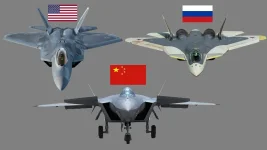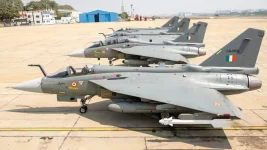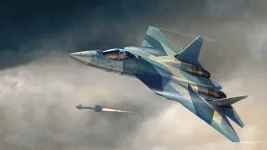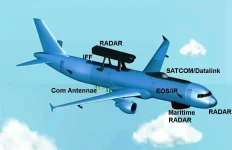- Views: 3K
- Replies: 26

A retired Indian Air Force (IAF) Jaguar pilot, Vijainder K Thakur, has issued a stark warning about the growing disparity in stealth fighter capabilities between India and its potential adversaries, China and Pakistan.
In a recent opinion piece, he predicts a concerning scenario for India's aerial defence by 2030, where the Pakistan Air Force (PAF) could operate two squadrons of J-35A stealth fighters (approximately 40 aircraft) and the People's Liberation Army Air Force (PLAAF) could double its J-20 fleet to 400.
In contrast, Thakur argues that the IAF is unlikely to have any operational stealth fighters by 2030. At best, it might have placed an initial order for the indigenously developed Advanced Medium Combat Aircraft (AMCA), which is still under development. This looming stealth technology gap poses a significant challenge to India's defence capabilities.
Stealth fighters like the J-20 and J-35A possess advanced avionics and weaponry, including air-to-air and air-to-ground missiles that can be launched without detection by conventional radar systems. This capability could allow adversaries to neutralize Indian defence before they can even detect an incoming attack.
Thakur contends that this widening disparity undermines India's military deterrence, particularly given its geopolitical situation with ongoing tensions with both China and Pakistan. He stresses the need for both peace-building efforts and a robust military buildup but criticizes India's current pace in achieving these goals.
Thakur's analysis highlights several key concerns:
- The stealth advantage: Stealth fighters' reduced radar cross-section makes them difficult to detect and track, allowing them to operate with a significant tactical advantage.
- Advanced weaponry: The J-20 and J-35A can deploy advanced missiles that can engage targets before being detected by Indian radar systems.
- Deterrence gap: The lack of indigenous stealth fighters by 2030 could undermine India's ability to deter aggression from its adversaries.
- Urgency for action: Thakur emphasizes the need for urgent action to address the stealth capability gap and maintain a strategic balance in the region.
While India continues to pursue indigenous solutions like the AMCA, it may need to consider interim measures to ensure its air defenses remain robust in the face of growing regional threats.




